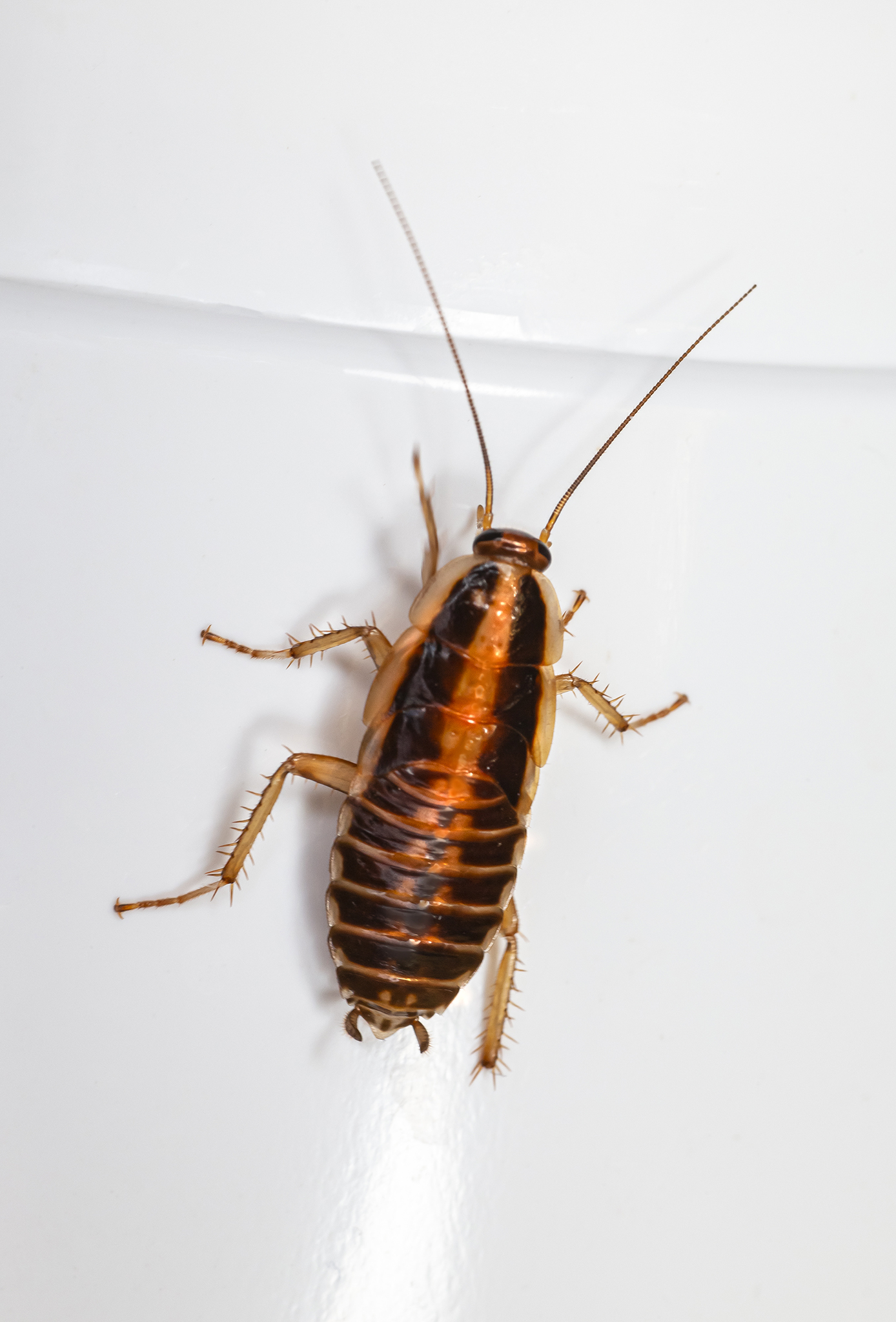The German cockroach (Blattella germanica) is a species of small cockroach, typically about 1.1 to 1.6 cm (0.43 to 0.63 in)[1][2] long. In color it varies from tan to almost black, and it has two dark, roughly parallel, streaks on the pronotum running anteroposteriorly from behind the head to the base of the wings. Although B. germanica has wings, it can barely fly, although it may glide when disturbed.[3] Of the few species of cockroach that are domestic pests, it probably is the most widely troublesome example.[4] It is very closely related to the Asian cockroach, and to the casual observer, the two appear nearly identical and may be mistaken for each other. However, the Asian cockroach is attracted to light and can fly like a moth, while the German cockroach cannot.
[Wikipedia]
The German Cockroach (Blattella germanica) is a small but highly adaptable insect species belonging to the order Blattodea. Here’s a concise description:
The German Cockroach is a common household pest known for its small size, ranging from 1/2 to 5/8 inches (13 to 16 millimeters) in length. It has a light brown to tan coloration with two distinctive parallel black stripes running down its thorax.
These cockroaches are prolific breeders, with females capable of producing several egg cases (oothecae) in their lifetime, each containing up to 40 eggs. The nymphs, or young cockroaches, hatch from the egg cases and undergo several molts before reaching adulthood.
German Cockroaches are omnivorous scavengers, feeding on a wide variety of organic matter, including food scraps, grease, soap residue, and even book bindings. They are primarily nocturnal, preferring to forage for food and seek shelter in dark, secluded areas during the day.
Due to their rapid reproductive rate and ability to thrive in a wide range of environments, German Cockroaches are notorious household pests, infesting homes, apartments, restaurants, and other buildings. They can transmit pathogens and trigger allergic reactions in sensitive individuals, making their presence undesirable.
Effective control measures for German Cockroach infestations typically involve sanitation, exclusion, and targeted insecticide applications. Integrated pest management (IPM) strategies, including the use of baits, traps, and insect growth regulators, are often employed to manage populations while minimizing environmental impact and human exposure to pesticides.
Preventive measures such as sealing cracks and crevices, eliminating food and water sources, and maintaining cleanliness are crucial for reducing the risk of German Cockroach infestations in homes and other structures. Early detection and prompt intervention are key to successfully managing these persistent pests.
Views: 154
Subscribe to the newsletter:
